Dispelling Small Machine Shop Myths
Many job shops start in a garage with a used mill and a manual lathe. The owners of this Utah job shop took a different tack. Along the way to a very successful business, they've debunked a bunch of myths commonly held about job shops.
Share




Rather than follow their jobs to Texas, Mr. Curry and Mr. Jones decided to stay put and open their own shop. They took the opportunity to go into business for themselves but with an eye toward creating a machine shop atypical from many they had encountered previously. Both are veterans of metalworking manufacturing, while Mr. Curry's expertise is in part design and Mr. Jones is a mechanical engineer.
"We had a chance to start our shop from scratch and in doing so, dispel many small machine shop preconceptions," says Mr. Curry. In August, 1993, the doors opened on Clean Machine, Inc. Since that day they've never looked back. Today they employ 24 people. Revenues are more than $1.5 million a year, and in this past year, they recorded growth of 50 percent over the previous year.
To find out how they built their business so quickly and dispelled several machine shop myths, we visited Mr. Curry and Mr. Jones at their shop in Salt Lake City. Their approach to shop environment and machine tool technology may be a model for the modern machine shop.
Perception Is Reality
The name of the shop, Clean Machine, is no accident. It was chosen to reflect an awareness that some machine shops are, to put it nicely, not the most pleasant places to work. The owners of Clean Machine believe that in today's manufacturing environment, many customers equate shop cleanliness with quality.
"If a customer visits our operation and sees the environment in which we manufacture, it's a plus for getting the order," says Mr. Curry. "Our shop is a sales tool. Of course we must do the job correctly but the first impression customers get when they see us helps give us a time at bat to tell our manufacturing story."
There are other advantages that Clean Machine has reaped from its clean, well lit and spacious shop environment. Getting and keeping good people has been easier with an orderly shop. "We've found that `Generation X' isn't interested in 'roughing it' at work," according to Mr. Curry.
"Given a choice between working here or in some other shop, we've found that we can attract people to our shop simply because of its appearance," says Mr. Jones. "We use our environment as a recruitment tool. It's such a simple thing but often it's not a priority for some of our competitors."
There are also technical reasons for keeping the shop tidy. While Clean Machine cuts a variety of materials—including aluminum, stainless, plastics and steel—machining Teflon is a specialty. Many of those parts are used in the semi-conductor industry. These are "white glove" operations because contamination of these parts is equivalent to scrap.
CNC From Day One
The Clean Machine partners eased into the machine shop business over a period of five months. In April, 1993, they started working at the machine shop part time, continuing full time in their soon-to-be-transferred jobs. In August, Clean Machine went full time.
"We started the business with a used CNC lathe," says Mr. Jones. "It had 5C collet, gang tooling and a Fanuc CNC. We purchased it with our own money and we kept it very busy."
Shortly after going full time, Clean Machine purchased a new vertical machining center. They looked at several knee mills with 2-1/2 and three axes but opted for a fully guarded, three-axis, CNC vertical. "The automatic tool changer is what pushed us toward the machining center," recalls Mr. Jones.
Those first two CNC machines set the course for the company's future machine tool acquisitions. Granted, a CNC lathe and machining center aren't pushing the technology envelope—but relative to where the shop was on its growth curve, these were some fairly sophisticated machine tools.
"We decided early on that we could differentiate our shop from others by building the business using machine tool technology and capability as a cornerstone. Instead of evolving into more advanced technology, we tried to start the business with it," says Mr. Jones.
That philosophy has led the shop beyond basic stand-alone machine tools. Although they have several conventional machining and turning centers, they also use dual spindle turning centers and live tooling lathes.
But the centerpiece of Clean Machine's shop floor is a Mazak Palletech manufacturing cell. "Customers don't expect to see this level of machine tool technology in a shop of our size or age," says Mr. Curry.
Making It With A Cell
Customer demands create the need for rapid part processing, reduced work-in-process, and minimum part handling. Shops of all types and sizes are moving toward methods that enable them to economically respond to these manufacturing realities.
Machine tool builders have done a good job developing what amounts to "plug and play" cellular technology that's affordable to an increasingly broad segment of metalworking shops.
Clean Machine's cell allows them to process work on a three-shift rotation. The first shift does the programming, setup and job prove-out, which allows the second and third shifts to be lightly attended production shifts.
Six pallets are available for random sequencing of jobs in and out of the cell. On one pallet, a dedicated rotary fixture is available when five-axis work is run.
Jobs are queued on the pallets and their programs reside in the cell controller. "With 120-tool capacity on the horizontal machining center, we can cycle many jobs through the cell without operator intervention," says Mr. Curry. "Assigning work to the cell is like playing chess. You must plan your moves (jobs) far enough ahead to meet your production and delivery goals."
Another advantage for Clean Machine has been its ability to run interrupted lots through the cell. "We'll get a call from a customer who wants us to make 500 pieces," says Mr. Jones. "However to get the order, we must make 50 pieces for immediate delivery. That's no problem for the cell because tooling is resident. All we to do is load 50 blanks on a tombstone, run them and then get back to our original schedule. The impact is minimal.
"Conversely," he continues, "on a conventional stand-alone machine, like our vertical machining center, we'd have to tear down the current setup, decide to run the whole 500 or, if we ran just 50, tear that setup down and do the whole thing again later for the balance of the order. Either we'd heavily impact our production schedule by sticking in the 500 parts or we'd incur twice the setup costs by splitting the order. Cases like this make cells practical for job shops like us."
Double Your Turning
Turning is another operation in which Clean Machine has invested in machine tools that are typically considered best used for higher volume production. One example is a Mazak Dual Turn that the shop uses for much of its round part production.
"This machine gives us the advantage of having basically two lathes on one base," says Mr. Jones. "Flexibility is a key requirement for our production mix and we get a processing choice with this machine. We can run one job complete with back turning operations performed or we can run two different parts through the machine. Coupled with our mill/turn and conventional two-axis turning centers, we can pick the best combination of turning and milling operations for the work we have rather than trying to fit the work to a limited process capability."
Keep It Moving
One of the core manufacturing beliefs Clean Machine practices is limiting or eliminating work-in-process. With the exception of the Teflon parts they machine (see sidebar, below) for the semiconductor industry, there are few machined workpieces lying around this shop.
"Getting work across the machine tools and having machine tools that can complete a workpiece in one or two handlings is key to our success," says Mr. Curry. "We take difficult jobs because we can process them more efficiently than some of our competitors. Once you become a reliable source for a customer's critical parts, there is much less tendency for the customer to pull that work out of your shop."
Making their job shop a more efficient producer than a customer could be themselves is a goal for Clean Machine. "Many of the individual jobs we produce are not of sufficient volume for a customer to invest in the technology to produce them at optimum efficiency," says Mr. Jones. "Our cell, for example, is a very efficient production tool that we use constantly. It would be difficult for almost any one of our customers to justify the investment for a cell like ours to make the several hundred parts per month that we pro-vide. On the other hand, running the high mix provided by our base of customers makes the cell more than pay for itself in our shop."
Clean Machine has plans to add another horizontal machine to the Palletech in the near future. It's how they plan to continue growing the business. Since the beginning of the shop, Clean Machine has purchased most of its equipment without a specific order to put on it.
"That's another machine shop myth we have ignored," says Mr. Jones. "So far, anyway, when we've bought machines that give us additional capability and flexibility, our workload has grown into the new capacity."
Mr. Curry adds, "We've also found that having several processing options at our fingertips gives us more competitive bids and usually a faster turnaround."
Just Say No
There is work that Clean Machine turns down or refers to other shops. Never an easy thing for a machine shop to do, it's necessary for Mr. Curry and Mr. Jones to keep the business within the boundaries they have defined.
"We can't be all things to all people," says Mr. Jones. "We enjoy doing this work and try not to allow ourselves to grow too fast so we lose our competitive edge. Getting too big too fast isn't worth the longer term problems it would bring us."
Are We Having Fun?
Is Clean Machine a model for other machine shops? It's hard to say for sure. One thing is clear, they are doing some things right.
"What's attracting people to our shop is our capability to do the job and the obvious kick we get out of doing it," says Mr. Jones. "Our people have the power to create a better process, design and build a better tool, and modify a program to get more out of a machine. They are engaged and we feel that's the key element to this machine shop's future. We can provide the best tools to work with but unless we also provide an environment that encourages their best use, we're not going to succeed." So far, so good.
Related Content
5 Tips for Running a Profitable Aerospace Shop
Aerospace machining is a demanding and competitive sector of manufacturing, but this shop demonstrates five ways to find aerospace success.
Read MoreCNC Machine Shop Honored for Automation, Machine Monitoring
From cobots to machine monitoring, this Top Shop honoree shows that machining technology is about more than the machine tool.
Read MoreQuick-Change Tool Heads Reduce Setup on Swiss-Type Turning Centers
This new quick-change tooling system enables shops to get more production from their Swiss turning centers through reduced tool setup time and matches the performance of a solid tool.
Read More6 Machine Shop Essentials to Stay Competitive
If you want to streamline production and be competitive in the industry, you will need far more than a standard three-axis CNC mill or two-axis CNC lathe and a few measuring tools.
Read MoreRead Next
Keep Your Spindles Cutting
Machining centers are marvelously flexible tools for getting production efficiency. Moreover, arranging machining centers into affordable, flexible cells allows shops to push the efficiency envelope even further.
Read MoreHigh Automation for Low Volume
Many people think flexible machining cells are for high production, but this shop finds just the opposite. Here's how they've grown their cell to meet the needs of their work.
Read MoreRegistration Now Open for the Precision Machining Technology Show (PMTS) 2025
The precision machining industry’s premier event returns to Cleveland, OH, April 1-3.
Read More













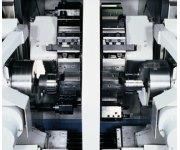
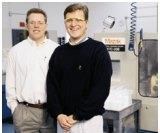
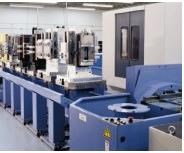
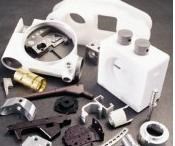








.jpg;maxWidth=300;quality=90)






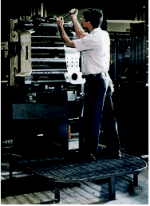
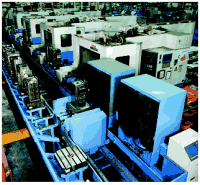

.jpg;maxWidth=970;quality=90)